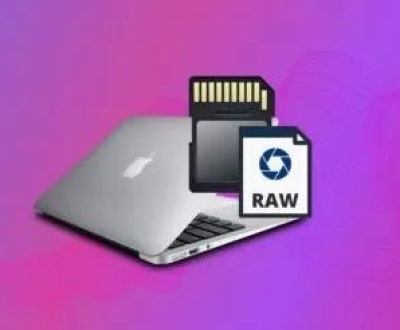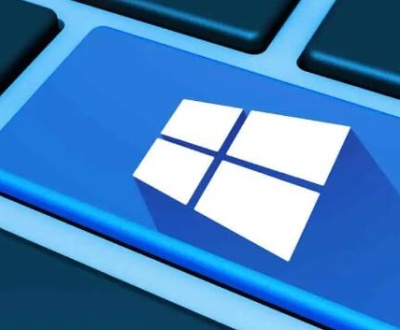Imagine sitting at your computer, ready to dive into a project or retrieve crucial documents, only to find a part of your hard drive labeled “Unallocated.” It’s a moment that can trigger panic, especially if you don’t immediately know what that means or how to fix it. An unallocated disk partition refers to a section of your hard drive that your system no longer recognizes as usable space. It’s neither accessible nor visible through standard file explorer tools, and worse, all the data stored on that partition seems to have vanished.
The situation becomes even more confusing when this unallocated space appears without warning. One day, your system is functioning normally; the next, you’re dealing with a potential data crisis. Whether it’s caused by partition deletion, virus attacks, failed system updates, disk corruption, or hardware failure, an unallocated partition is a red flag that demands swift and informed action.
Let’s begin by understanding what an unallocated partition is and what makes it different from other types of storage errors.

What Is an Unallocated Partition?
An unallocated partition on a hard drive is a portion of disk space that is not assigned to any drive letter and lacks a recognizable file system. This means the operating system does not acknowledge this area as part of its storage map, effectively making it invisible for file operations.
You might encounter this scenario in Disk Management in Windows, where you see a black bar representing “Unallocated” space, often right next to healthy partitions. While the files might still physically exist on the drive, the absence of allocation renders them inaccessible through regular means.
Some common reasons for a partition becoming unallocated include:
Accidental deletion: Mistakenly deleting a partition using disk management tools.
Partition table corruption: Damage to the partition map prevents the system from recognizing partitions.
Virus or malware: Malicious software can alter or damage disk partitions.
File system corruption: Logical errors within the file system may result in an unallocated status.
Improper formatting: Formatting errors during OS installations or conversions can lead to lost partitions.
Signs Your Partition Has Become Unallocated
Before launching into recovery, it helps to confirm that you’re actually dealing with an unallocated partition. Here are the signs to look for:
Missing drive letter: A formerly functional drive is no longer visible in File Explorer.
Disk Management shows unallocated space: Black bar on a specific partition area.
No access to data: Clicking on a drive prompts you to format it.
Data recovery tools suggest RAW or unallocated status.
Precautions Before You Begin Recovery
Before diving into recovery methods, take the following steps to avoid making the problem worse:
Stop using the drive: Any new data written to the disk might overwrite recoverable files.
Do not format or create new partitions: Doing so can further damage the existing data structure.
Disconnect the drive if it’s external: Prevent automatic write operations by your OS.
Use write-blocking tools: If available, write-blockers help maintain the current state of the drive during recovery.
Methods for Unallocated Partition Recovery
There are several reliable approaches to recovering data from unallocated partitions, each suited to different scenarios. We’ll break them down into manual and software-based methods.
Method 1: Use Disk Management to Reassign the Partition
If the data isn’t critical and you just want to reclaim the space, Disk Management can be used to create a new partition. Note: This will erase all existing data.
Steps:
Right-click on This PC > Manage > Disk Management.
Locate the unallocated space.
Right-click and choose New Simple Volume.
Follow the wizard to assign a drive letter and format.
Only use this if you’re okay with losing existing data or you’ve already recovered the files.
Method 2: Recover Data Using Professional Recovery Software
Panda Assistant is an intuitive, powerful data recovery software designed to help users retrieve lost, deleted, or corrupted files from a wide range of storage devices. Whether you’re dealing with accidental deletions, partition loss, system crashes, or formatted drives, Panda Assistant provides a streamlined and user-friendly interface that makes the recovery process accessible to everyone from beginners to IT professionals.
Supporting recovery from hard drives, SSDs, USB flash drives, memory cards, and even external storage, Panda Assistant is compatible with Windows and macOS systems. It supports multiple file systems such as NTFS, FAT32. exFAT, and HFS+, ensuring flexibility and broad coverage for various devices. The software also offers both quick scan and deep scan modes, giving users the ability to perform fast retrievals or more comprehensive data sweeps depending on the severity of data loss.
Method 3: Use TestDisk (Advanced, Free, Open-Source)
TestDisk is a command-line tool for advanced users who are comfortable working without a GUI. It’s powerful, free, and supports various file systems including NTFS, FAT32. and ext2/ext3/ext4.
Steps:
Download TestDisk and run as administrator.
Select Create a new log file.
Choose the affected disk from the list.
Select the partition table type (TestDisk usually auto-detects).
Choose Analyse to search for partitions.
Follow the prompts to locate and recover lost partitions.
Write the partition table to restore access.
TestDisk can often repair the partition table itself, meaning the partition and its data may be fully restored without file-level recovery.
Method 4: Use CMD and DiskPart (Minimal Recovery Use)
This method is mostly for identifying unallocated space, not recovering data. However, it can sometimes help bring back access to corrupted partitions.
Open CMD as Administrator.
Type diskpart and hit Enter.
Type list disk to identify your disk.
Select the disk: select disk X (replace X with your disk number).
Type list partition or list volume to see details.
If you’re simply trying to reassign a drive letter or activate a healthy but hidden partition, this method might help—but it won’t recover lost files.
Preventing Partition Loss in the Future
Recovering from an unallocated partition is never fun, so prevention is key. Here’s how to avoid this scenario in the future:
Regular backups: Use tools like Windows File History or cloud services.
Create system restore points: Especially before OS updates or partitioning operations.
Use disk utilities wisely: Always double-check actions in Disk Management or third-party tools.
Run antivirus scans: Prevent malware that might tamper with partitions.
Invest in UPS (Uninterruptible Power Supply): Protects your computer from unexpected shutdowns that could corrupt partitions.
When to Seek Professional Help
Sometimes, DIY methods aren’t enough. If you:
Hear clicking or grinding sounds (indicating physical damage),
See your disk is not detected at all,
Have tried recovery tools with no success,
Need mission-critical data,
…it’s time to contact a professional data recovery service. These services operate in cleanroom environments and use proprietary tools to extract data from even severely damaged drives.
Frequently Asked Questions (FAQs)
Can I recover data from an unallocated partition without software?
Not easily. If you don’t want to use software, recovery would involve manual partition table reconstruction using tools like TestDisk—but even that counts as “software.” For true non-software recovery, you’d need a backup.
Is formatting an unallocated partition safe?
Only if you don’t need the data. Formatting assigns a new file system and erases existing data structures, making recovery much harder afterward.
Why did my partition become unallocated after Windows update?
Sometimes updates conflict with disk management protocols, especially if dual-boot systems or third-party disk tools are involved. Backup before major updates.
Will chkdsk help recover an unallocated partition?
No. chkdsk works on recognized partitions with file systems like NTFS or FAT. It cannot analyze or fix unallocated space.
Are SSDs affected the same way?
Yes, SSDs can also show unallocated space due to logical issues, though TRIM functionality can make file recovery more difficult after deletion.
Facing an unallocated partition can be a stressful experience, especially when it seemingly appears out of nowhere. But as you now know, it doesn’t necessarily mean your data is lost forever. With the right tools and knowledge, it’s entirely possible to recover your files and even restore the original partition.
About us and this blog
Panda Assistant is built on the latest data recovery algorithms, ensuring that no file is too damaged, too lost, or too corrupted to be recovered.
Request a free quote
We believe that data recovery shouldn’t be a daunting task. That’s why we’ve designed Panda Assistant to be as easy to use as it is powerful. With a few clicks, you can initiate a scan, preview recoverable files, and restore your data all within a matter of minutes.
Subscribe to our newsletter!
More from our blog
See all postsRecent Posts
- Retrieve deleted videos from sd card 2025-04-25
- How to retrieve damaged sd card? 2025-04-25
- Retrieve photos from sd card 2025-04-25

 Try lt Free
Try lt Free Recovery success rate of up to
Recovery success rate of up to









